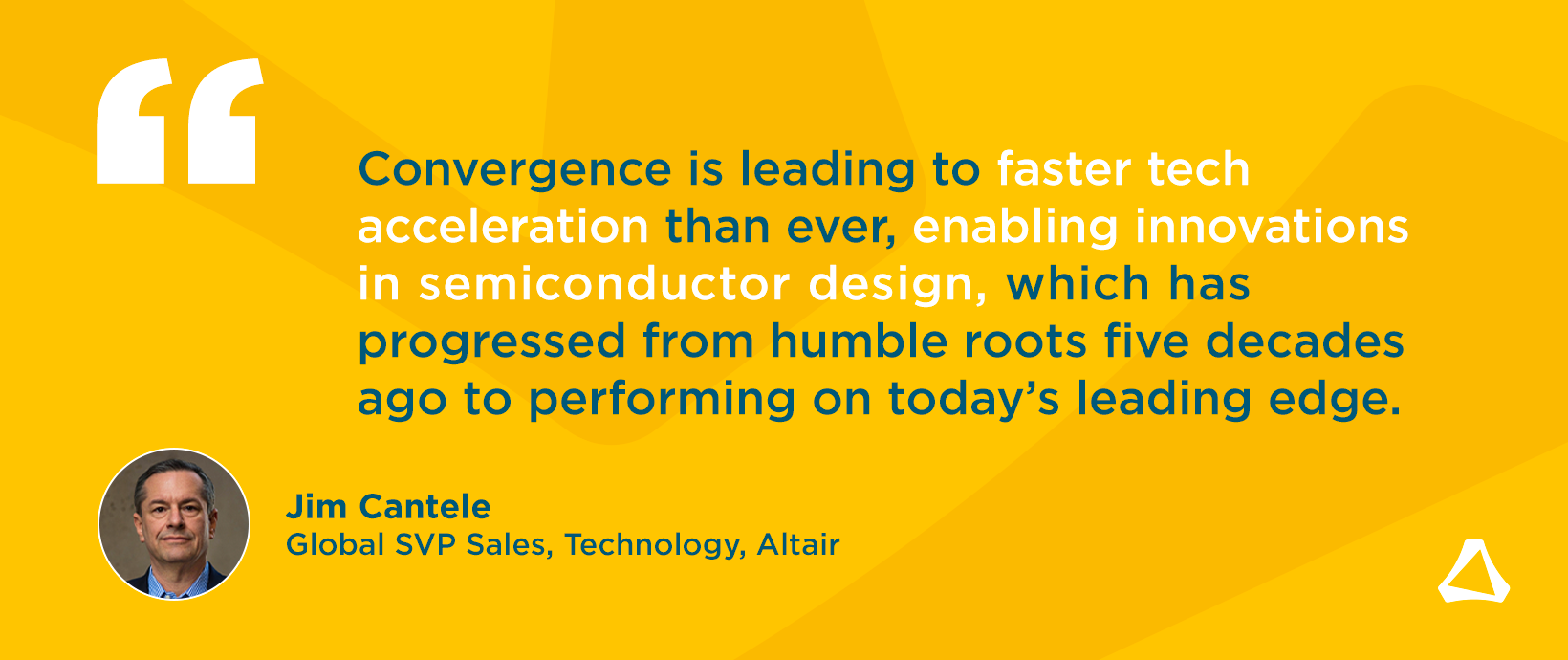The Vital Connection: Optimizing Antenna Performance in Our Smart Speaker Design Project

The shift to wireless connectivity is one of the defining trends of modern consumer electronics. For design teams, it presents a significant challenge. Growing demand for compact, feature-rich products means that space on the printed circuit board (PCB) is very much at a premium. Integrating an antenna is further complicated by the fact that adjacent components can degrade its performance.
It’s an issue that needed to be addressed in our recent smart speaker design project, which I have been detailing in a series of blog posts. In this third and final chapter of the story, I’ll look at how the Altair team employed several tools to optimize the performance of the antenna and analyze and solve coexistence and interference issues.
This time around, I’m drawing on a webinar presented by Smit Baua, electromagnetic (EM) application engineer. As with the other steps in the development of our speaker, the overriding aim is to demonstrate the compelling benefits of a simulation-driven approach: cutting the time and costs associated with traditional workflows, while enhancing perceived quality.
In the case of antenna design and integration, there are real gains to be made. Typically, it has been a process dominated by lengthy physical prototyping and testing that reflects the numerous hurdles that designers need to overcome. They include checking antenna design characteristics, integrating the antenna on the PCB, evaluating its real-world performance, and measuring and mitigating the effects of heating. Wireless connectivity is standards-driven, so ensuring compliance is yet another challenge. In our smart speaker project, the team utilized Bluetooth and employed a meander line antenna. Using Altair® Feko®, Altair’s high-frequency EM solution, Baua considers four key parameters:
Reflection coefficient. In our smart speaker, it needs to be less than -10dB. With Feko, Baua demonstrates that the initial antenna concept achieves a thoroughly acceptable -17dB.
Radiation pattern for gain. As you can see in the webinar, Feko provides a clear and vivid graphical representation of a doughnut-shaped radiation pattern, color-coded to show the relevant values.
Surface current. On occasion in consumer product designs, it’s important for the engineer to assess which part of the antenna is contributing to a particular frequency. Again, users benefit from clear, color-coded graphics to show the surface current across the antenna.
Thermal analysis. In compact products, the heat generated by components can prove a real headache. If the problems only become apparent late in the day, during physical testing, the result is likely to be costly rework and delay. As Baua demonstrates, our EM solution combines easily with a thermal solver. The EM solver automatically exports the material losses that are used by the thermal solver. The loaded file is then mapped into the thermal solver, which plots the heat distribution.
So far, so good. But how does the antenna perform when it is integrated on the PCB? As with thermal analysis, importing the PCB design from Altair PollEx™ is straightforward. Baua then positions the antenna near the Bluetooth IC, with a trace connecting it to the required PIN. For accurate simulation, all the components on the PCB are assigned material properties. The performance of the antenna is then re-evaluated, using the same system parameters.
Baua does a great job of showing us just how easy it is to see, on screen, the impact on the reflective coefficient and radiation performance. From that point, the Altair platform offers three different tools for restoring the performance parameters that have been degraded by integration onto the PCB.
One option is to use Feko’s built-in optimizer model. The user simply selects one of five algorithms that are employed within a completely parametric model. With the design variables and goals set by the user, the algorithm generates the optimized design variables.
Alternatively, Altair’s machine learning (ML) optimization engine can be employed. This interfaces with any solver, collecting data and exploring the design model. Trained models can run hundreds of iterations in a matter of seconds – optimizing system performance while accelerating the design process.
For our smart speaker, Baua goes for a third option and generates an impedance matching circuit and integrates it into the PCB. Checking the parameters again, all are back within target.
The next step is to decide on the position and orientation of the PCB. In other words, testing the performance of the antenna in its actual operating environment, the speaker case.
Again, it’s a fantastic example of the simulation-driven approach. Users have the freedom to explore options early in the process and generate immediate performance results. In this case, Baua tries five different configurations. Equally, he could have used a parametric sweep to assess all the possible locations.
Whichever route the user takes, the big picture here is the ability to compare all the results, side by side. What’s more, with Altair, all the tools are available under one roof. Transition from one to another is seamless. Instead of spending time on correcting their designs, users can focus on innovation – and adding value to the finished product.
This theme is very much carried over to the final stage of our smart speaker journey. In another webinar, Gopinath Gampala, EM technical manager, explores and addresses the challenges of coexistence and interference. Typically, smart products embrace a plethora of different standards and technologies. In the case of the smart speaker, Gampala demonstrates how Altair’s tools can measure and resolve the issues involved in combining Bluetooth and Wi-Fi, which share the same 2.4GHz band.
In brief, Gampala’s study includes the modelling of a typical house interior, the analysis of Wi-Fi and Bluetooth networks inside the house, and an exploration of the interference between the two. With Altair’s solution it is possible to create extremely detailed 3D models of houses, including the accurate representation of features that can have a significant impact, such as wall thickness. Three different Wi-Fi standards are compared, with our tools showing Wi-Fi coverage, and the varying interactions between the access points and prediction points. The received power levels/Wi-Fi signal strengths are mapped throughout the house, as are the maximum achievable data rates and throughputs. Gampala also compares different routers, the differences between 2.4GHz and 5GHz signals, and assesses the pros and cons of repeater devices. Analysis of the interference between Bluetooth and Wi-Fi signals, and means of mitigation, are also undertaken.
As with the webinars I’ve reviewed in previous blog posts, there is only so far a written description can go. I really do recommend taking time out to watch them. For those new to simulation-driven design, nothing beats seeing it in action. Moreover, while we have chosen the example of a smart speaker, it should be stressed that the benefits are applicable throughout the smart product domain and beyond. And as consumers continue to expect richer functionality, lower costs and greater miniaturization, the value of a simulation-driven philosophy will continue to grow. In fact, we are rapidly approaching the point where it simply becomes a necessity in terms of meeting the performance targets and delivery deadlines that design teams now face.




